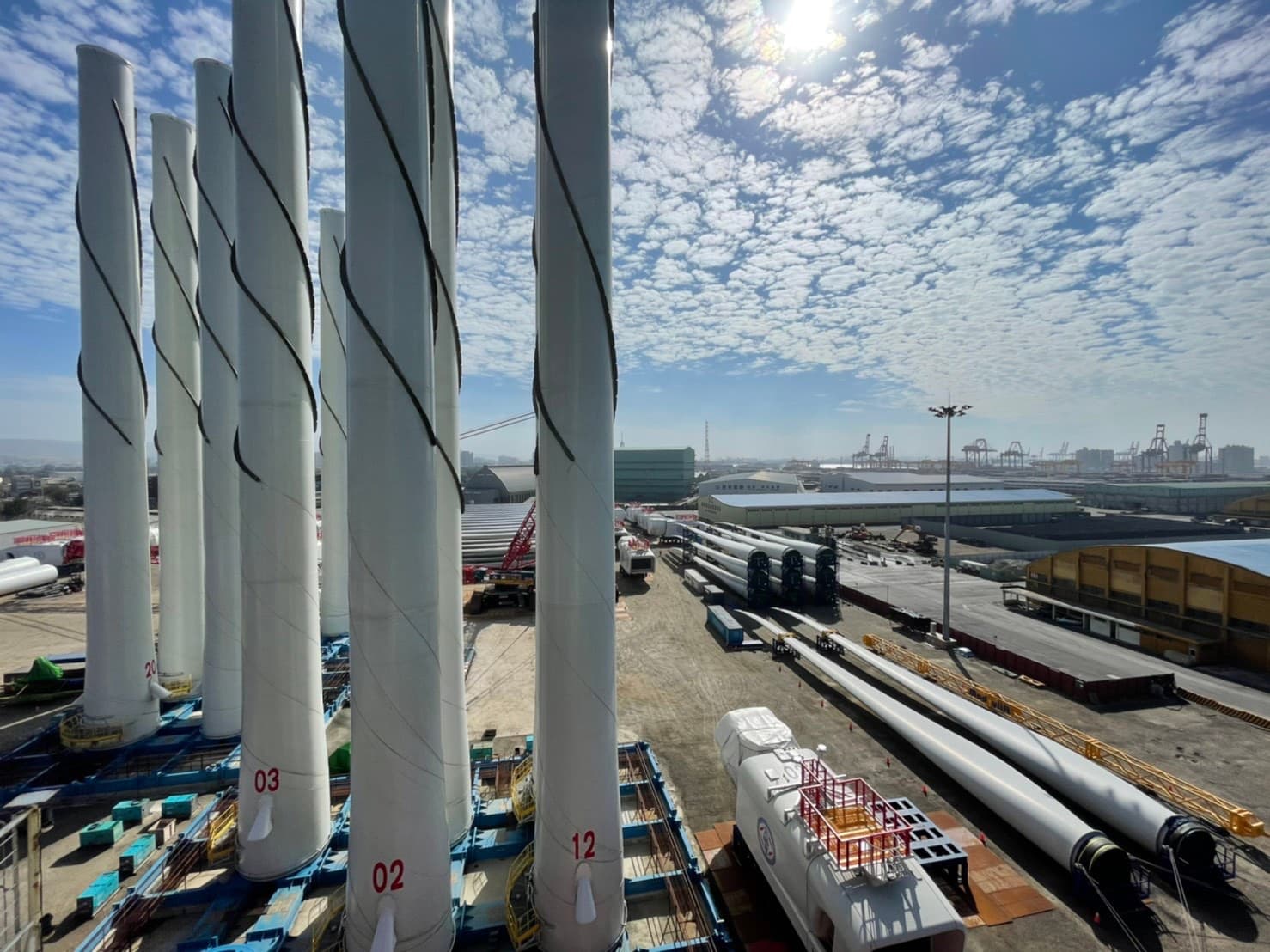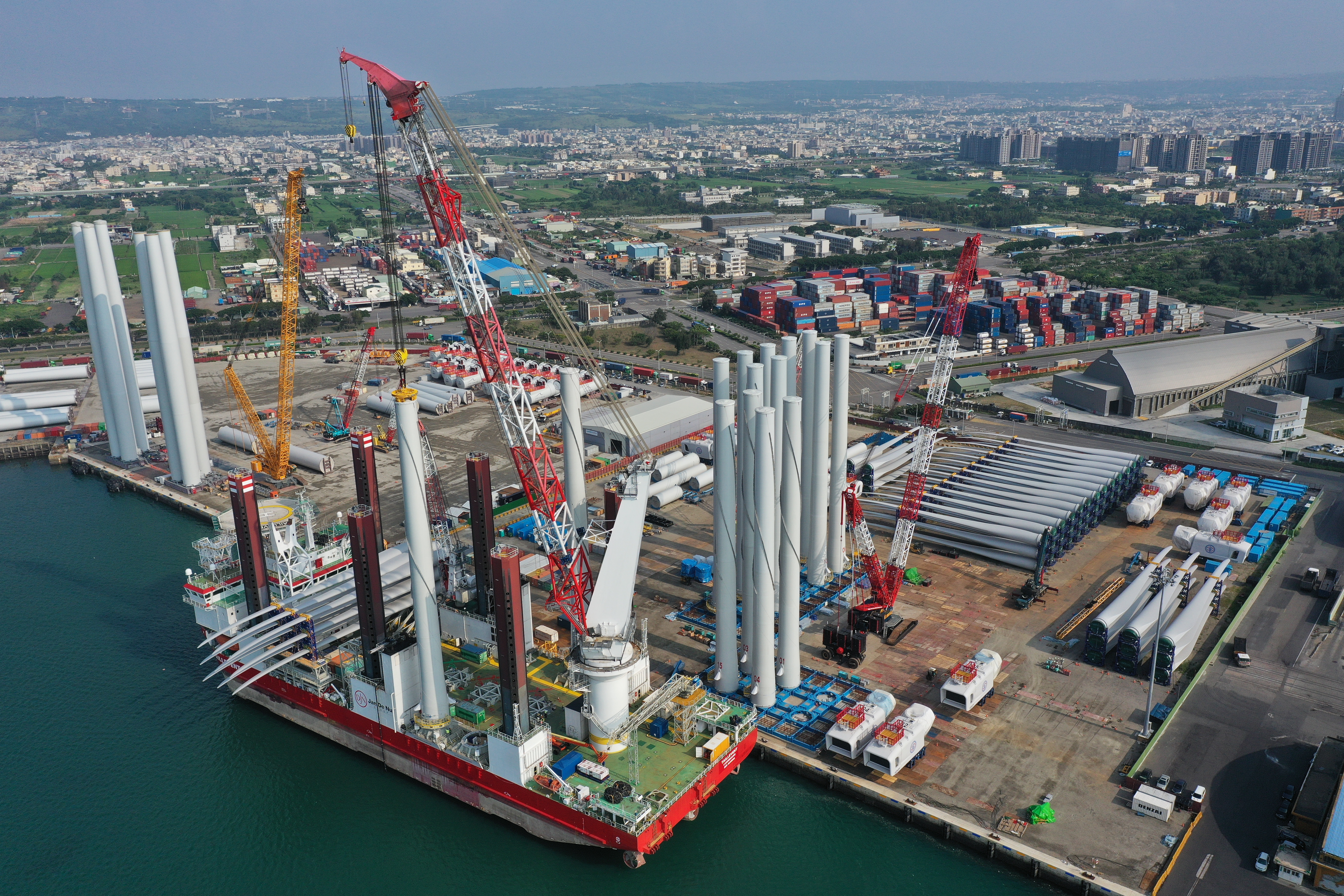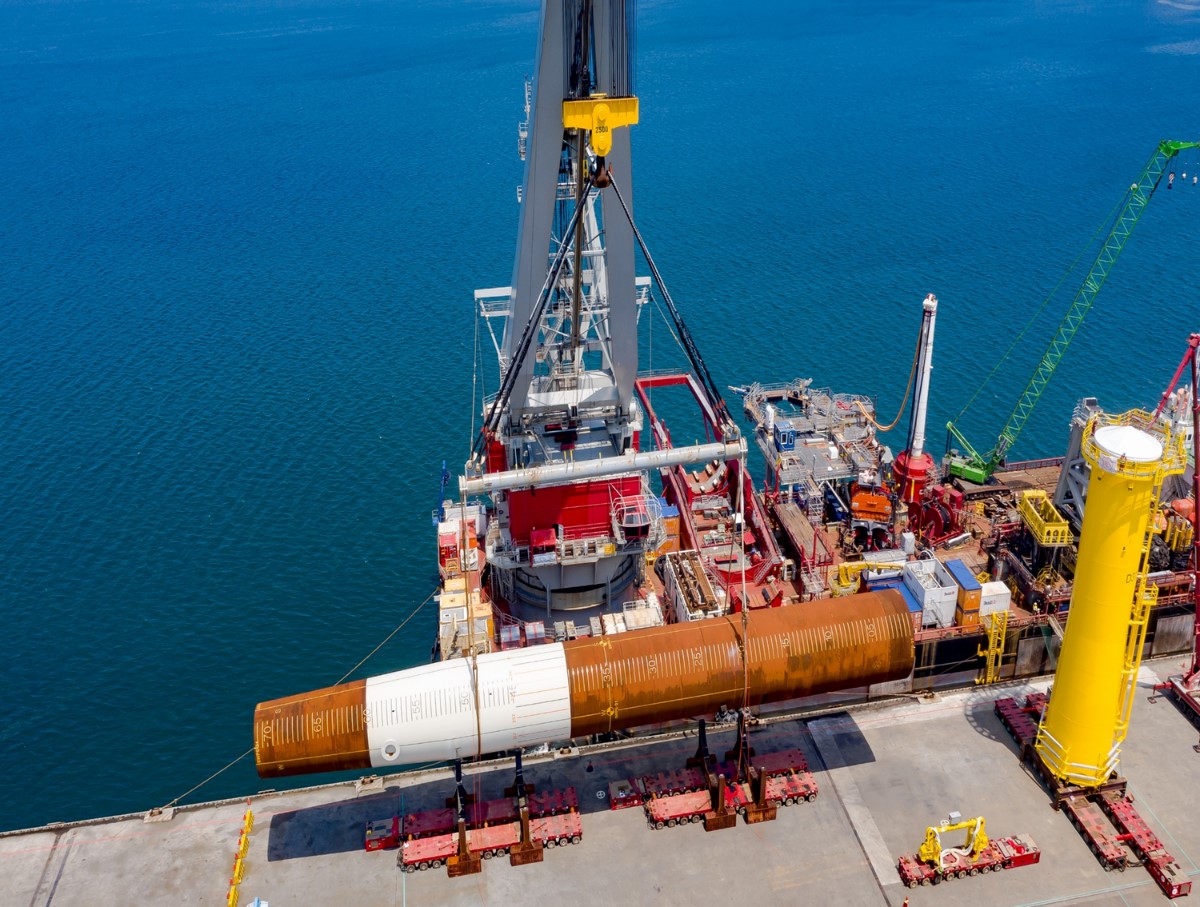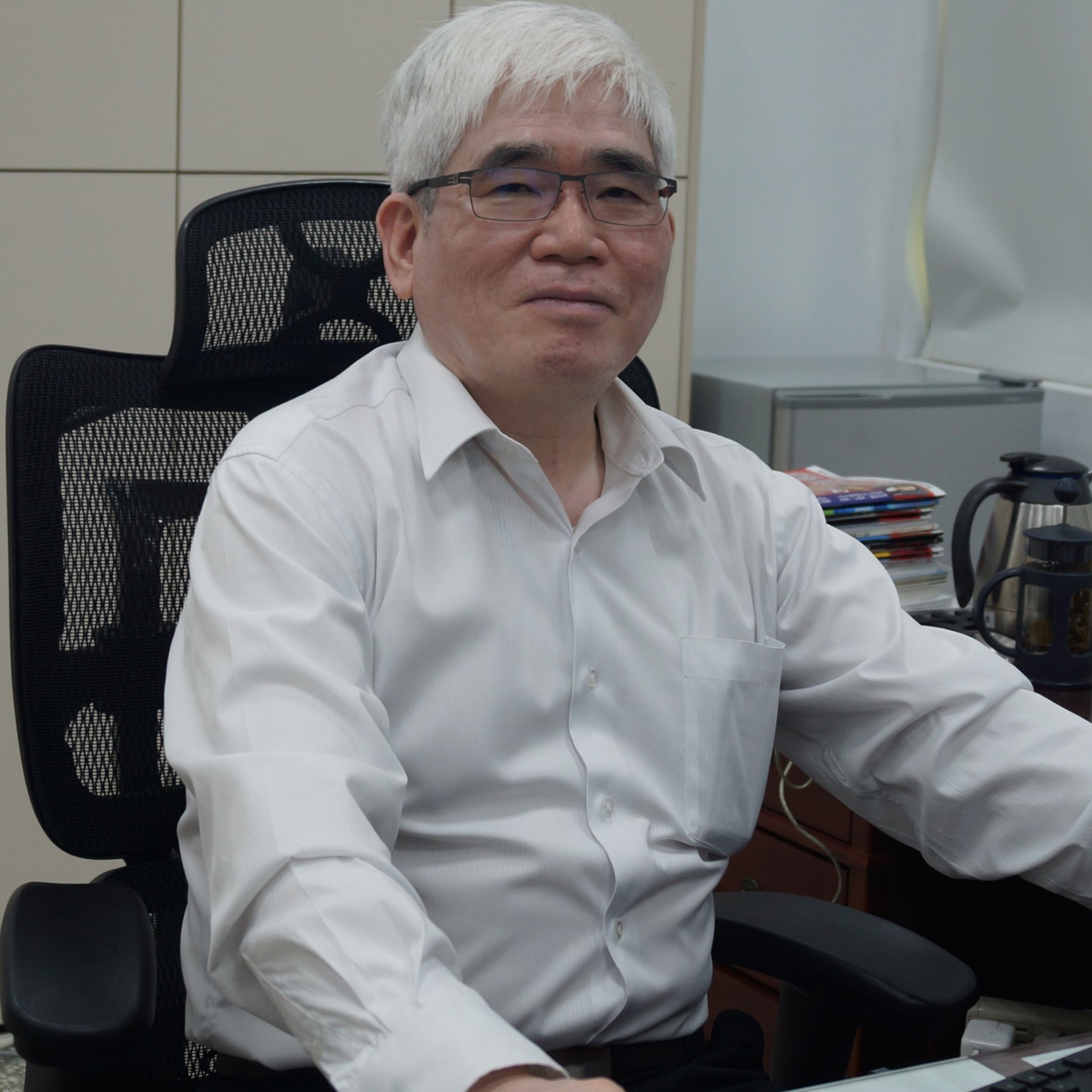Offshore wind industry: An opportunity to transform Taiwan’s ports and harbors

Source:WindTAIWAN Magazine
The offshore wind energy industry is an opportunity to transform Taiwan’s ports, but the road from ideas to reality might not be smooth. To provide necessary port facilities, what are the challenges of International Ports Corporation (TIPC) facing?
Views
Offshore wind industry: An opportunity to transform Taiwan’s ports and harbors
By Ying-feng Chung, Wu Xin-enweb only
In line with the government’s offshore wind energy development policy, Taiwan International Ports Corporation (TIPC) has mapped out four initiatives for offshore wind energy business, including the “Turbine Pre-assembly Area”, “Localized Turbine Manufacturing Area”, “Operations and Maintenance (O&M) Service and “Training Center”, in preparation for the establishment of the industry in Taiwan.
In addition to being the designated base port for wind power operations, Taichung Port is also a target industrial hub for international renewable energy players, not only providing port infrastructure such as heavy cargo wharves, land, and berths required for offshore operations, but also renders more diversified port-related services for the industry.
 (Source: WindTAIWAN Magazine)
(Source: WindTAIWAN Magazine)
Over the past few years, I have come to realize that the offshore wind energy industry may potentially be an opportunity to transform Taiwan’s ports, but the road from ideas to reality might not be a smooth one.
In 2015, the Ministry of Economic Affairs issued a directive to build a heavy cargo wharf. My idea at that time was that the installation vessel must sail slower than regular merchant cargo, so the heavy cargo wharf must be adjacent to the main channel of the port. Also, because of the tight schedule, it needed to be a location whose land and water was ready to vacate for wharf construction. After careful evaluation, wharf 5A and 5B were chosen for the construction to keep up with the localization process, serving as a base for inbound and outbound shipments of wind turbine installation components.
 (Source: The Taiwan Power Company)
(Source: The Taiwan Power Company)
On the other hand, Formosa 1 Offshore Wind Farm was estimated to start operations in 2019, we quickly converted the bearing capacity of wharf 2, a caisson-type quay, from 3 tons to 10 tons, and strengthened the seabed to 90 tons per square-meter. With the government’s target capacity increased from 3.5G to 5.5G in 2025, the requirements for the port have changed significantly as a result of such expansion. We have made wharf 2 more flexible to be the heavy cargo wharf for Formosa1. And Wharf 36 was engaged to be a cargo wharf, and now we temporarily turned it into a dedicated one for offshore wind power. After passing the peak of offshore wind construction, it will resume its original purpose.
The components of offshore wind farms are extremely large in size, therefore vast logistical areas are required. In order to provide sufficient hinterland, we centralized the management of the bulk cargo in the entire port area and replaced the traditional loading and unloading operations with efficient automated operation.
We reorganized the wharves and the way the cargo was collected, while the vacated wharf can cater to the assembly, placement and O&M needs of wind turbine components and increase the overall efficiency.
More attention needed in the planning of port facilities
The closer we get to the scheduled time of construction, the more pressure many parties are under, as we all strive to achieve the goal of a nuclear-free homeland by 2025. I found it difficult to come up with a holistic approach under a tight schedule. What lies in the future? As a matter of fact, I think we need to take into account future technologies.
Also, where is the right site? We need to find appropriate sites and then make suitable plans. For instance, I started in the field of offshore wind in 2015, and the entire wharves were finished in 2020. It took five years to build up the full onshore infrastructure. But everyone is talking about floating wind turbines now. The problem is that we don't even know what the ports should look like in the future, let along what to prepare. In other words, the challenge at the moment is that we have not figured out the future needs of the industry.
 (Source: WindTAIWAN Magazine)
(Source: WindTAIWAN Magazine)
I believe planning should not just follow the policy; instead, planning should be one step ahead of the policy, in order to build ports and wharves that are suitable for offshore wind energy. When we were first approached by international companies, their first requirement was no obstructions in the air around the port. I was wondering why that is. It turned out that if there were aerial obstructions such as bridges or cables above in the air, the logistics of the wind turbine components would have been affected.
In preparations for offshore wind construction, there are many aspects that have to be factored in. The construction method would determine the relevant infrastructure and locations, for example, whether the underwater foundation is assembled at the wharf or at the seabed, the conditions would be totally different that the requirements for the wharves and the hinterland would change accordingly.
In fact, Taiwan has done more than what a lot of European countries did. I have yet to hear any other country that has piers with a 50-ton bearing capacity, like Taichung Port wharf 5A and 5B do. While in the UK, it is 20 tons at most.
Offshore wind farm construction during different phases require different vessels, contractors, and methods of construction, deriving different requirements for quay structure and hinterland condition.
The method of each model varies depending on the functionality of the wharf, but if a wharf is built that is accessible to all vessels, it can expedite transportation, which is undoubtedly the most efficient way for Taiwan, a small and densely-populated place.
About the author:

Chung Ying-Feng (鍾英鳳)
Chung Ying-Feng is the Vice President of Business of Taiwan International Ports Corporation (TIPC). He has a Master’s degree in Hydraulic and Ocean Engineering from National Cheng Kung University. Previously he had served as the President of Port of Taichung, Vice President of Port of Kaohsiung, both under TIPC.

Wu Xin-en (吳心恩)
Wu Xin-en is Managing Editor of WindTAIWAN magazine. She has an MBA from NSYSU. Wu had been assigned to Bangladesh and Lesotho overseeing the factory CSR standard establishment and cross-region business expanding projects.
Have you read?
♦ Taiwan contributes to drinking water quality improvement for the Philippines
♦ Is carbon neutrality a castle in the air for industrial enterprises?
Uploaded by Jane Chen






